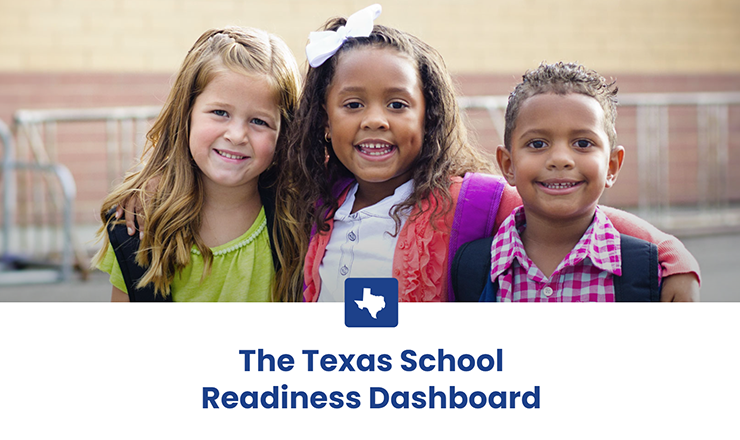
Download Top 5 Facts (PDF)
Full Evidence Review in the Prenatal-to-3 Policy Clearinghouse
A child allowance is a cash-based family support policy aimed at providing families with children a consistent, recurring income supplement to prevent or mitigate poverty and defray the costs of raising a child.
Below are the 5 essential things to know from the full Prenatal-to-3 Policy Clearinghouse Evidence Review on Child Allowance.

| Safety net policies in the US are tied to employment and tax credits while most peer countries support families with children with a permanent, universal child benefit policy.The US is an outlier among peer countries in that it does not have a permanent, universal child benefit policy in place to support families with children, but rather has a patchwork of employment-based and tax-based policies that comprise the country’s anti-poverty social safety net. This patchwork leaves many of the poorest families without needed resources. For example, the US’s primary cash assistance program, Temporary Assistance for Needy Families (TANF), reaches fewer and fewer families each year—supporting 4.4 million families in 1996, but only 1.2 million in 2018. The federal and state earned income tax credits (EITCs) reward earned income with a refundable tax credit that has been shown to successfully incentivize parent employment, reduce child poverty, and improve family health outcomes. However, the EITC is tied to work and excludes parents without earned income. The US child tax credit is another anti-poverty tool that excluded the poorest families—those with annual earnings of less than $2,500—prior to the passage of the American Rescue Plan Act. The 2021 American Rescue Plan Act includes a temporary expansion to the child tax credit that makes the credit more closely resemble a monthly child allowance, and the expansion has the potential to become permanent. |

| Rigorous simulations and analyses estimate that a child allowance policy in the US could reduce child poverty by more than 50%.A child allowance would benefit children and their families beginning in the infant and toddler period and throughout childhood. Such a policy would have the greatest impact on families in or near poverty. The US currently has one of the highest child poverty rates among wealthy peer countries, and poverty is expected to rise as the economic fallout from the COVID-19 pandemic reveals its full scope. Rigorous simulations and analyses by US research groups and anti-poverty organizations have estimated that a child allowance policy in the US could potentially reduce child poverty by more than 50 percent. In addition, some scholars estimate that the benefits to society would amount to over eight times the initial fiscal investment in a US child allowance. |

| A child allowance is theoretically aligned with all 8 prenatal-to-3 policy goals, given the importance of income to so many indicators of well-being.The research is clear that money matters for children’s wellbeing and achievement, and having sufficient household resources is particularly important in the infant and toddler years. Research shows that young children growing up in poverty may experience chronic, toxic stress that can hinder optimal brain development, and the most sensitive period of brain development occurs during the first 3 years of life. Greater income allows for parents to ensure children’s basic needs are met (e.g., access to proper nutrition, safe and clean housing, and health care when needed), and financial stability may also reduce parental stress, leading to more nurturing child-parent relationships and reducing the likelihood of adverse experiences in the household. Given the importance of income to so many indicators of wellbeing, a child allowance policy is likely to lead to improvements in all eight of the prenatal-to-3 policy goals: Access to Needed Services, Parents’ Ability to Work, Sufficient Household Resources, Healthy and Equitable Births, Parental Health and Emotional Wellbeing, Nurturing and Responsive Child-Parent Relationships, Nurturing and Responsive Child Care in Safe Settings, and Optimal Child Health and Development. |

| A child allowance in the US could reduce racial disparities in financial hardship and narrow poverty gaps.Child poverty in the US disproportionately affects children of color and children in single-parent households. Authors of a Columbia University study estimated that the American Rescue Plan Act passed in March 2021 will reduce child poverty by 56 percent (or 7.5 percentage points) overall, with much of this reduction owed to the child tax credit expansion. The scholars estimated that the poverty rate among Black children will be reduced by 11.8 percentage points, for Hispanic children by 10.3 percentage points, for White children by 5.2 percentage points, and for Asian children by 5.6 percentage points. Despite the significant reductions in poverty for Black and Hispanic children, their poverty rates still remain high even after accounting for the relief, standing at 9.7 and 9.2 percent, respectively. |

| Further causal research is needed to determine the impact of a child allowance policy on the prenatal-to-3 period.Existing international evidence and results from unique cash transfer programs in Alaska and North Carolina already make a strong case that a permanent child allowance could significantly reduce child poverty in the US, without producing negative impacts on labor force participation or reducing earned income. Because such a policy has yet to be passed and implemented in the US, further causal research is needed to determine the impacts of child allowances (rather than general cash transfer programs) in the American context on the prenatal-to-3 period once such a policy is implemented on a statewide or federal basis for the first time. The American Rescue Plan Act of 2021 will provide an opportunity to empirically study the impacts of recurring cash payments on child poverty and family wellbeing. |
View the full and downloadable Prenatal-to-3 Policy Clearinghouse Evidence Review on Child Allowance, including the complete list of references and related resources, at pn3policy.org/policy-clearinghouse/child-allowance.



